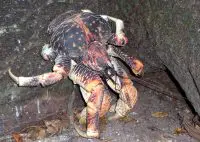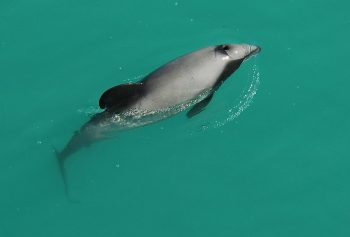Coconut crab (birgus latro) is a decapod crustacean and it belongs to the hermit crab species. It is the world’s largest terrestrial arthropod. From the genus Birgus, it is the only species. It is also the largest land-living invertebrate around the world.
Normally, coconut crabs are blue-tinted but the color varies from reddish-orange to purple. It has five pairs of legs. The claws (chelae) at the front-most pair are large. The chelipeds (legs having chelae or claws) of the next two pairs have tapered tips and strong enough to enable the crab to walk or even climb. The last two pairs are smaller with the last being the smallest and inside the shell. It has a special organ for respiration called branchiostegal lung. By means of its smallest pairs of legs at the hindmost part, it tends to clean this organ.
It can grow up to a length of 40 centimeters and weighs up to 9 pounds. Its leg span measures about 3 feet. Its carapace can grow up to 7.8 centimeters in length and 20 centimeters in width.
Mating occurs between June and August on land. It reaches maturity at the age of 5 years. After about 40 to 60 years, the coconut crabs do not grow any longer.
The adult crabs m olt (shed their skin) every year while the external skeleton becomes hardened again after another 1 to 3 weeks. However, during this time, the crab is vulnerable due to its soft body. Therefore, it digs a 3-feet long burrow and stays there for up to 16 weeks.
olt (shed their skin) every year while the external skeleton becomes hardened again after another 1 to 3 weeks. However, during this time, the crab is vulnerable due to its soft body. Therefore, it digs a 3-feet long burrow and stays there for up to 16 weeks.
They are different from other hermit crabs because they do not carry shells. Only the young individuals use snail shells for the protection of their abdomens. The adults harden their abdomens. These crabs cannot swim.
They are distributed across the Pacific and the Indian Oceans, just like that of a coconut tree. It is present as far as the shores of Tanzania toward the West. The territory of Christmas Island has the world’s largest population of these crabs.
Coconut crabs inhabit burrows on ground and fissures of rocks. They stay on land and go underwater only for spawning eggs.
They are omnivorous creatures. However, coconut crabs feed mainly on seeds, fleshy fruits and medulla of plants. Besides, they also scavenge carrion and eat hatchlings of tortoise. The Christmas Island Red crab also falls prey to this crab. It can spot its food quite easily thanks to its acute sense of smell.
Humans and other coconut crabs are the only known natural predators of these crabs.
Other Names: Robber crab, Palm thief





